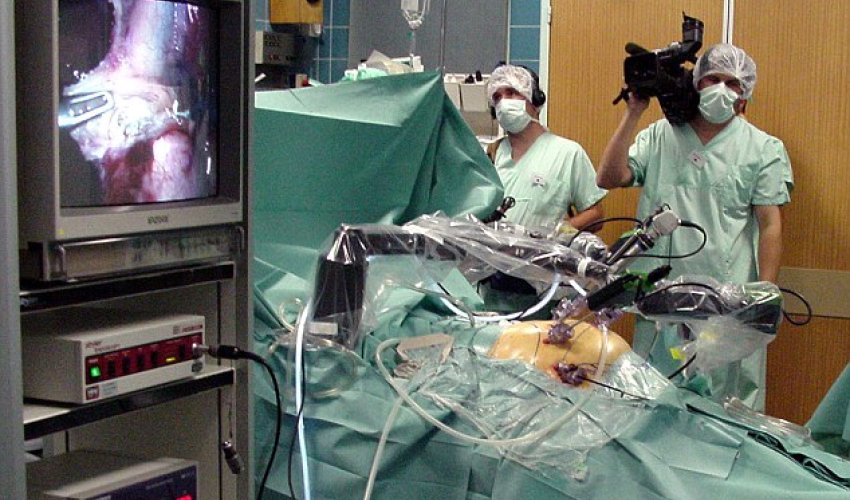Google to develop robo-surgeons

Google is working with US health care giant Johnson & Johnson to develops robots capable of helping out in the operating theatre.
The two companies said they are working 'to create an innovative robotic-assisted surgical platform capable of integrating advanced technologies with the goal of improving health care delivery in the operating room.'
They hope to improve techniques for robotic-assisted surgery - a minimally invasive procedure that uses technology to give surgeons greater control, access and accuracy.
'The companies seek to develop new robotic tools and capabilities for surgeons and operating room professionals that integrate best-in-class medical device technology with leading-edge robotic systems, imaging and data analytics,' the statement said.
Robotics has been used to improve accuracy in operating rooms for around 15 years, including in heart, eye and prostate surgery.
Gary Pruden, who heads the Johnson & Johnson global surgery group, said the collaboration with Google and J&J unit Ethicon 'is another important step in our commitment to advancing surgical care, and together, we aim to put the best science, technology and surgical know-how in the hands of medical teams around the world.'
Google will be providing software and expertise for data analysis and vision but will not be developing the control mechanisms for the robots.
The partnership will help Johnson & Johnson, the world’s largest healthcare product manufacturer, compete in the growing field of robotic medical devices.
Google’s life sciences team is also developing systems that can detect cancer and heart attacks using nano particles, and has worked on smart contact lenses that contain sensors capable of monitoring the signs of diabetes – technology that was licensed by the Swiss drug firm Novartis in July 2014 to develop into a practical medical application.
Google has been awarded a patent for the technology that will 'automatically modify or destroy targets in the blood that have an adverse health effect'.
According to the files, the wearable could target these cells using an 'external energy source' such as ultrasound or radio frequencies.
(dailymail.co.uk)
ANN.Az
Latest news 
More news 



































 Photo
Photo 



 Video
Video 

